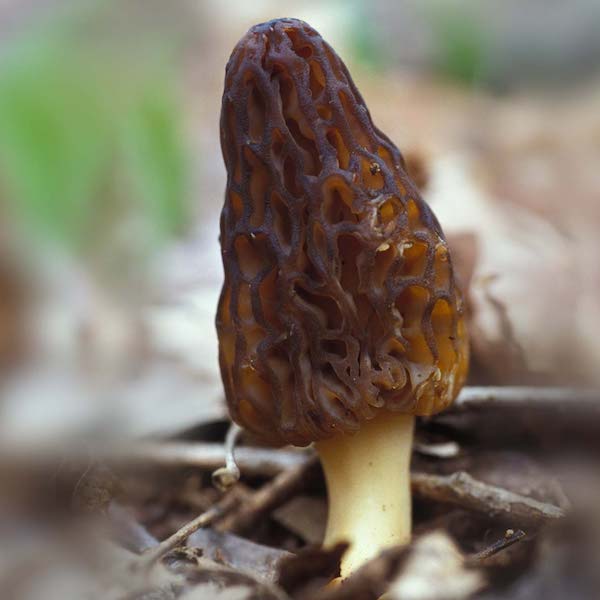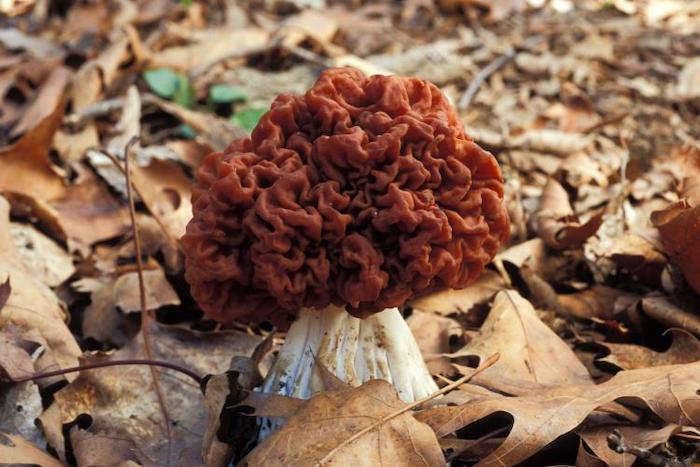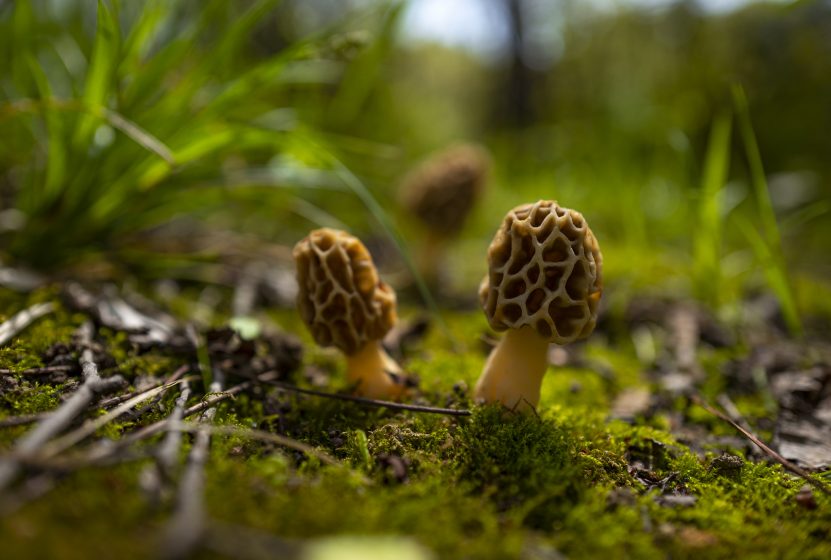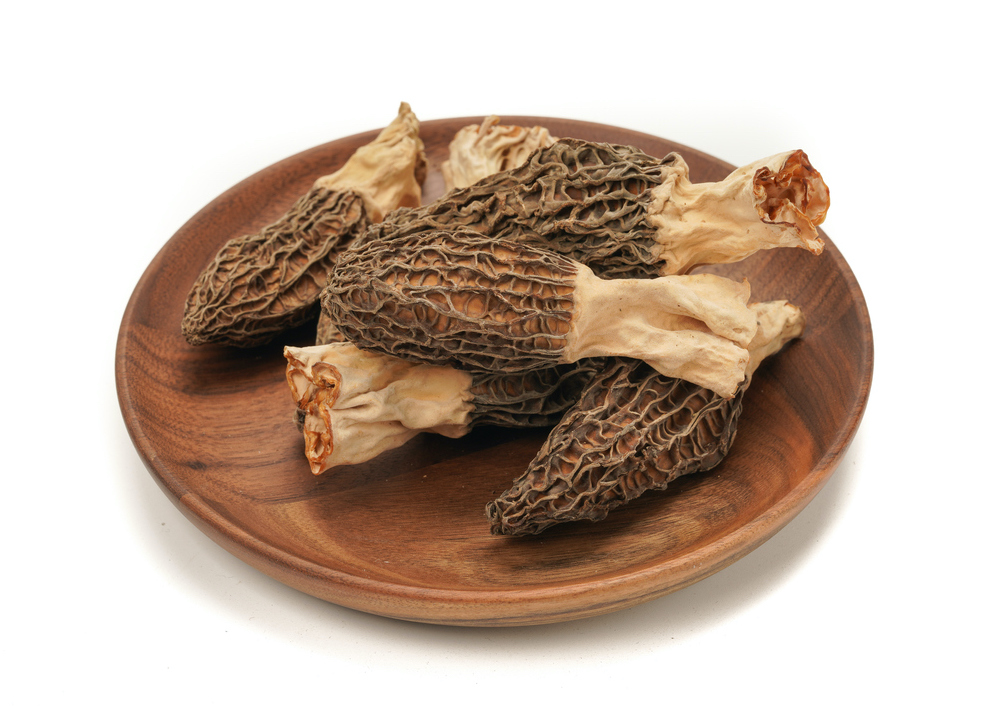Treasured by foodies for its spongy texture and earthy flavor, the morel is the Holy Grail for springtime mushroom hunters. Since these delicate little fungi have successfully resisted commercial cultivation for centuries, morels can only be found in the wild throughout North America and Europe.
Morel hunters often take to the woods late in March through May to find the prized mushroom. They begin to appear when daytime highs are in the low 60s, and the lows are above 40 degrees.
The morel is one of North America’s easier wild mushrooms to identify due to its distinguished honeycomb-shaped cap. Morels grow between two and four inches tall. The erect caps range in color from pale cream to nearly black. The stem is white to pale cream.
The morel has a variety of regional nicknames depending on the region: Dryland Fish, Hickory Chicken, Molly Moocher, or Miracle.

Black morels (Morchella elata) are often the first morels to appear on south-facing slopes in the spring. They typically pop up in large colonies around ash trees, coniferous forests, and recently burned areas. They are recognized by their dark brown, or almost black, cap.
Yellow, or common, morels (Morchella esculenta) appear next in the springtime woodlands. These yellow-capped mushrooms are often found under deciduous trees such as ash, aspen, elm, and oak. They are also frequently spotted at the bottom of standing dead trees.
The last to appear is the late morel (Morchella deliciosa). These elusive morels also have yellow caps and are smaller than the common morel. They are also the hardest to find.
Once harvested, the morels are carried in a mesh bag so their spores can scatter throughout the woods to increase future crops.
Morels contain thermolabile toxins. They must always be cooked to inactivate the toxin before eating.
While some morel hunters only give the mushroom a quick cleaning to remove dirt, others prefer to soak the morel in water for two to three hours to wash out any insects living inside.
Morels, rich in iron and Vitamin D, are easy to prepare for the dinner table. A quick sauté in butter and lightly seasoned with cracked black pepper and salt results in an instant gourmet meal.

Mushroom hunters should also be careful to avoid collecting “false morels.” These morel doppelgangers can cause severe gastrointestinal upset and loss of muscular coordination, including the cardiac muscle.
False morels are distinguished by their reddish-brown or yellow caps. Their caps also tend to hang to one side, making the mushroom look somewhat disfigured. The false morel has a brain-like texture instead of the true morel’s well-defined pitting.
As with all fungi, it’s always best to start consuming small amounts to minimize potential allergic reactions. The morels should also be thoroughly washed and free from decay.
And, when in doubt, leave it out!



